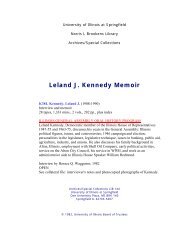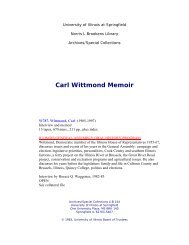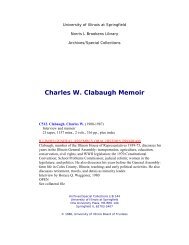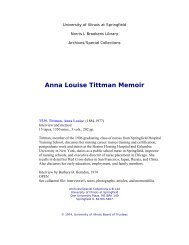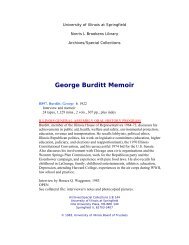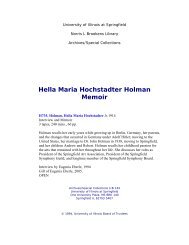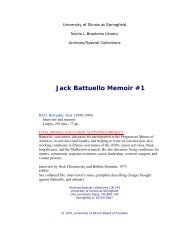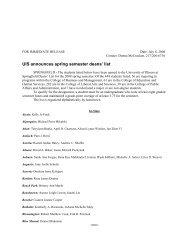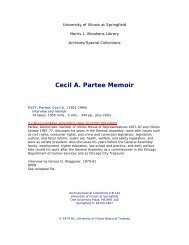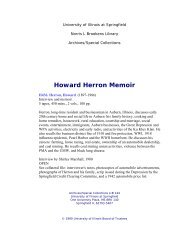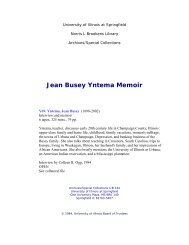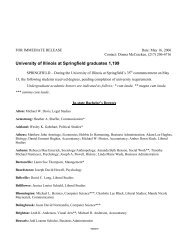STATEMENT OF FACTS - University of Illinois Springfield
STATEMENT OF FACTS - University of Illinois Springfield
STATEMENT OF FACTS - University of Illinois Springfield
You also want an ePaper? Increase the reach of your titles
YUMPU automatically turns print PDFs into web optimized ePapers that Google loves.
through K-1-G – concrete at Miracle Motors. (Vol. LXI, R. 2108; 2112-13) Q-1<br />
had a different source than Q-2 because it had a smooth surface. (Vol. LXI, R.<br />
2110)<br />
In comparing the concrete, Munroe employed a process called x-ray<br />
diffraction. This process involves scraping pieces <strong>of</strong> concrete to obtain cement<br />
samples. Then, an x-ray beam is shot through the particles while on a glass slide.<br />
The x-ray beam is moved in a 180 degree arc so that you get a reflection and<br />
refraction <strong>of</strong> the x-ray energy <strong>of</strong>f the particles. (Vol. LXI, R. 1979-80)<br />
Munroe concluded that the cement used to make Q-2 and K-1-C was the<br />
same. (Vol. LXI, R. 2113-15) This was based on the fact that during his x-ray<br />
diffraction examination there were two blips <strong>of</strong> the screen at 18 degrees and 34<br />
degrees where the component parts <strong>of</strong> the cement were the same. (Vol. XLVI, R.<br />
2114) Munroe also found similar weatehring patterns. (Vol. LXI, R. 2127-31) In<br />
Munroe’s opinion, Exhibit K-1-E was also made from the same batch <strong>of</strong> cement<br />
as K-1-C and Q-2. (Vol. LXI, R. 2116-17) The same was true for Exhibit K-1-G.<br />
(Vol. LXI, R. 2117-19; 2139-41)<br />
Munroe testified that he found both consistencies and inconsistencies in the<br />
concrete samples. (Vol. LXII, R. 2184; 2188) All the concrete tested was Portland<br />
cement and because <strong>of</strong> this there were going to be consistencies. (Vol. LXII, R.<br />
2187) The mineralogy and component parts <strong>of</strong> Q-1 were the same as the samples<br />
and the degree <strong>of</strong> difference in the aggregates used in the samples were not great.<br />
(Vol. LXII, R. 2192) However, because the x-ray diffraction was inconclusive on<br />
the samples it is impossible to say that there was a “match.” (Vol. LXII, R. 2195)<br />
In other words, the consistencies that were found do not lead to a positive<br />
identification. (Vol. LXII, R. 2246)<br />
Defense Concrete Evidence<br />
In contrast to cinders, concrete is very good earth material evidence because<br />
every batch <strong>of</strong> concrete is unique. (Vol. LXIX, R. 22-23) After examining the<br />
-80



